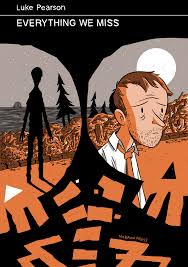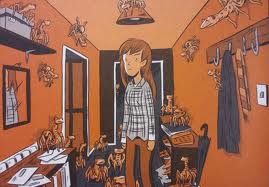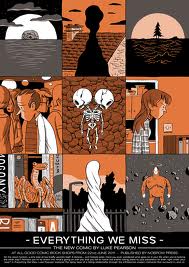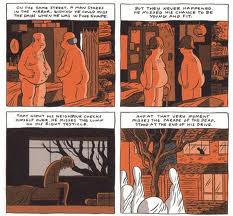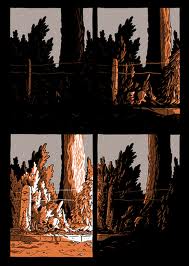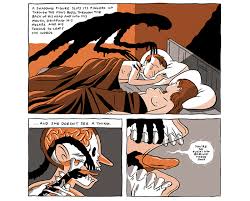This is the third and final installment of my series of loose musings on time in comics. The February 13, 2014 post looked at graphic representations of different types of time and highlighted Sebastien Conard and Tom Lambeens’s critical piece, “Duration in Comics.” This was followed by some meditation on March 27, 2014 on the depiction of contemplative time via the figure of the flâneur as manifested in Jiro Taniguchi’s The Walking Man. This week, I’ll explore lost time in Luke Pearson’s 38-page graphic novella, Everything we Miss (2011). Pearson is a British comic artist in his 20s (here is Paul Gravett’s fine short review of Pearson’s growing body of work). Pearson is currently making some North American rounds with a stop at NYC’s Strand Bookstore this week, followed by an appearance at TCAF this weekend (May 10-11, 2014), and is best known for his Hilda series for children,
but I am most fond of his comic for adults, Everything We Miss, a gently elegiac exploration of our many blind spots, i.e. all the things we fail to see, fail to enact, fail to imagine, fail to love.
In many ways, Everything we Miss addresses a question other than the one I am exploring here: as the title of this novella suggests, Pearson’s emphasis is on “missing” things – missing an erstwhile lover, narrowly averting catastrophe, missing the unseen creatures that might inhabit our worlds alongside us, such as the “omniscient anurids– the great observers of human kind.” (n.p.)
Pearson wants to remind us to look around, to be attentive, to get our heads out of our butts every once in a while, but he also recognizes that there is a temporal issue here: every moment that you fail to see something, fail to recognize its value, influences the next moment and the next, and slowly your lived experience of hours, days, months and years (in short, your lived experience of time) whittles down, reduces, grows impoverished as you let all sorts of things slip away.
By not grasping these moments when you can, you miss the chance to lay down a memory. All those lost memories stay lost: what you didn’t see at 22 becomes what you do not remember at 43 or 89. Over and over, you lose for having lost:
By narrowing his color palette to shades of gray and black, apricot and white, Pearson allows his panels to self-illuminate in interesting ways: orangey apricot functions to startle us gently, but also to illuminate things nocturnally, as a campfire reduces and concentrates the few elements in its reach and as sunset adds an ethereal quality to atmosphere.
Shades of gray and black work to represent space and background, but also convey psychic trouble, memory and fantasy.
Subjective and objective experience intermingle in Everything we Miss, and so, too, do subjective and objective time. Do you know of other comics that treat lost time and missed experience/absence with similar sensitivity?

